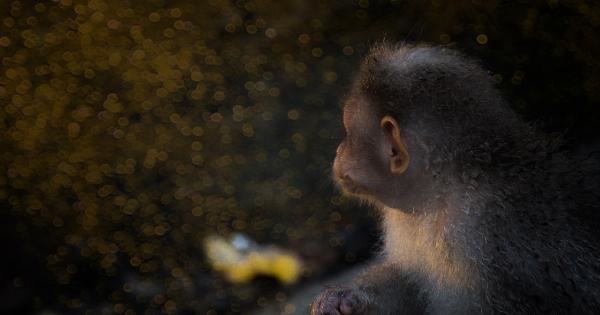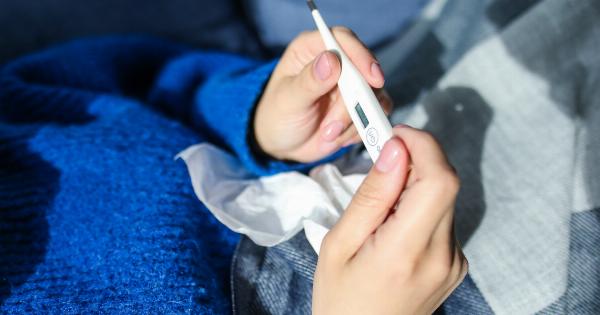Monkeypox is a rare viral disease that was first identified in monkeys in 1958. It is a zoonotic disease, meaning it can be transmitted between animals and humans.
Monkeypox outbreaks have occurred sporadically in Central and West African countries, with the most recent outbreak reported in Nigeria in 2017. This article will explore the journey of the monkeypox virus, from outbreak to control.
Origin and Transmission
The monkeypox virus belongs to the Orthopoxvirus genus, which also includes the variola virus, the causative agent of smallpox. The virus is believed to originate from various species of rodents and primates, particularly African squirrels and monkeys.
Humans can contract monkeypox through direct contact with infected animals, such as bites or scratches, or through consumption of undercooked meat from infected animals.
Early Outbreaks
The first recorded human case of monkeypox occurred in 1970 in the Democratic Republic of the Congo. The disease was initially misdiagnosed as smallpox due to the similar clinical presentation.
However, further investigations revealed that the virus responsible for the outbreak differed from smallpox. Since then, sporadic outbreaks have been reported in several African countries, including Cameroon, Central African Republic, and Liberia.
Symptoms and Diagnosis
The symptoms of monkeypox are similar to those of smallpox, although less severe. The initial phase of the illness is marked by fever, headache, muscle aches, and fatigue.
This is followed by the development of a rash, which progresses from macules to papules and eventually to fluid-filled vesicles. The diagnosis of monkeypox is confirmed through laboratory tests, such as polymerase chain reaction (PCR) and viral culture.
2017 Nigerian Outbreak
In 2017, Nigeria experienced the largest recorded outbreak of monkeypox since its discovery. The first case was reported in Bayelsa state and quickly spread to other states within the country.
The outbreak resulted in over 150 confirmed cases and one death. The Nigerian government, in collaboration with international health organizations, implemented various control measures to contain the spread of the virus.
Control Measures
During the 2017 outbreak, several control measures were implemented to mitigate the spread of monkeypox. These included:.
1. Surveillance and Reporting
Enhanced surveillance systems were established to detect and report suspected cases promptly. This involved training healthcare workers to recognize the symptoms of monkeypox and report any suspected cases to health authorities.
2. Isolation and Quarantine
Infected individuals were isolated to prevent further transmission of the virus. Additionally, close contacts of confirmed cases were quarantined and monitored for a specific period to ensure early detection of any new cases.
3. Infection Prevention and Control
Stringent infection prevention and control measures were implemented in healthcare facilities. This included the appropriate use of personal protective equipment (PPE), strict hand hygiene practices, and proper disinfection of contaminated surfaces.
Public health campaigns were also conducted to educate the general population on preventive measures, such as handwashing and avoiding contact with sick animals.
4. Vaccination Campaigns
The Nigerian government, with support from the World Health Organization (WHO), initiated a mass vaccination campaign targeting high-risk populations.
The smallpox vaccine, which provides cross-protection against monkeypox, was administered to healthcare workers, close contacts of confirmed cases, and individuals residing in affected communities.
5. Contact Tracing and Treatment
Extensive contact tracing was conducted to identify individuals who had close contact with confirmed cases. These individuals were closely monitored and provided with necessary medical care if they developed symptoms.
Antiviral medications were administered to reduce the severity of the disease and alleviate symptoms.
Success and Learnings
The control measures implemented during the 2017 monkeypox outbreak in Nigeria were successful in containing the spread of the virus. The number of new cases gradually decreased, and no new outbreaks have been reported since then.
However, the outbreak highlighted the importance of improving surveillance systems and strengthening preparedness and response capacities in affected countries.
Conclusion
Monkeypox, a rare viral disease with origins in animals, has posed challenges to public health systems in Central and West African countries.
Through effective control measures, such as surveillance, isolation, vaccination, and treatment, the spread of monkeypox can be successfully mitigated. Continued efforts in research, surveillance, and preparedness are crucial to stay ahead of this zoonotic disease and minimize its impact on human health.































